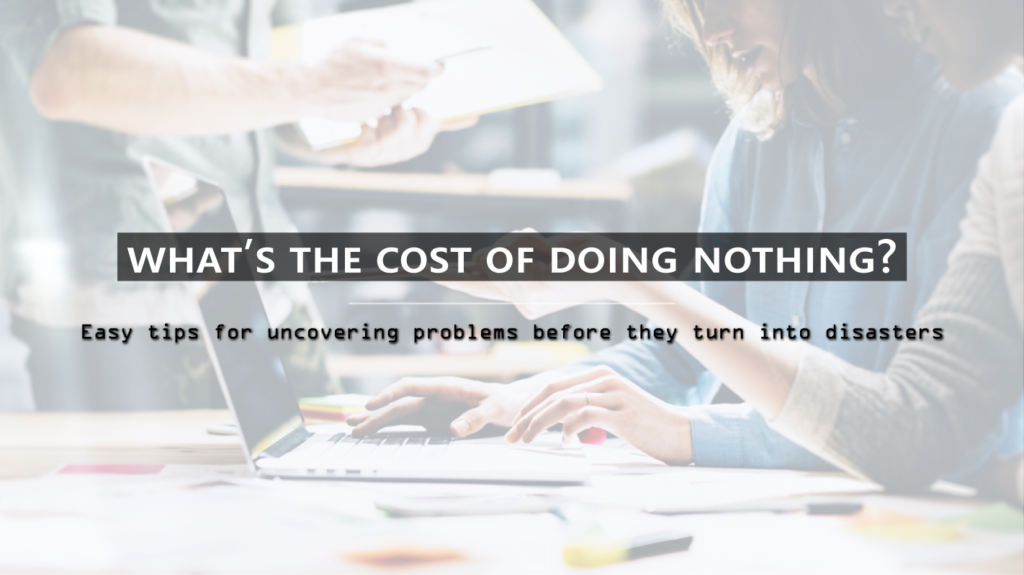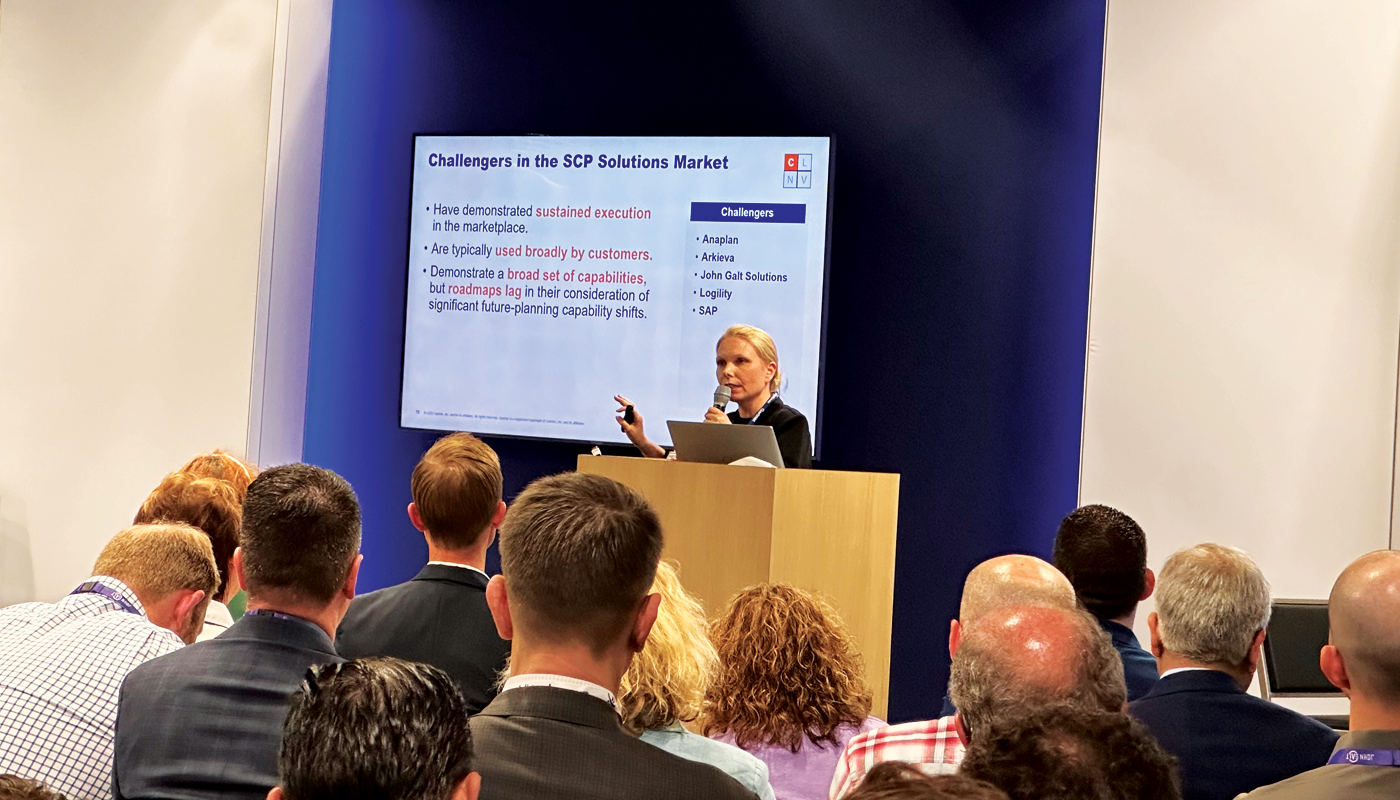Is there a need to act if no ‘imminent’ repercussions exist? Can you be a more proactive problem solver? In this 3-part blog series, we’ll cover how proactive problem solving can help your team and business stay ahead of the curve, improve productivity, and avoid costly problems in the short and long term.
A couple weeks ago, I posed a question to one of our leaders. I asked, “Can we help someone if they don’t know a problem exists?”
His answer was no and he used the example below to explain why.
Imagine this scenario: you go to your doctor and he/she tells you, you’re in good health but if you don’t start exercising you’ll have serious health problems as you age. Based upon the doctor’s recommendation, would you be motivated to start working out?
Probably not, but why?
It’s because you’re healthy so you don’t know what it’s like to have medical problems when you’re older. In other words, it’s not easy to change something that isn’t causing you pain, right now. However, when you’re older and have serious medical conditions, you’ll definitely be able to understand the cost of not acting sooner.
Hindsight is always 20/20. It’s easy to look back and identify what should have been done. If the exercising example didn’t hit home, then let’s look at this through a business lens.
As a demand planner, even though your company’s forecast error has been increasing over the past couple of months, nothing has been done to fix the issue.
Why haven’t actions been taken? It’s because the forecasting issue isn’t causing you pain yet.
But now, let’s imagine the c-suite starts questioning your abilities because the forecast error is affecting the bottom line. Or you lose a big order to your competition because you didn’t have a product in stock, would this cause you to take action?
You bet it will because you and the business are feeling it’s effects. How so? Well, company executives are questioning your abilities. This is a big deal and it would probably cause anyone to worry. In both cases, the high cost of inaction is recognized only after the pain becomes real and in your face.
Prevent Firefights
As supply chain planners, you know the advantages of being proactive versus reactive. If your planning strategy is merely reactive, then your team will always be playing catch up. It feels like you’re drowning. If you’re proactive then it’s likely you’ll be able to prevent fires before they even start. This makes your job and life more enjoyable.
Over the years, we’ve partnered with many supply chain planners to help them work through real problems. They all had one thing in common; they had an issue and were proactive in addressing it because they understood the pain and the cost of doing nothing. These proactive initiatives have created better work environments, processes, and happier team members, but in order to reach this point, they first had to act.
Our goal with this series is to bring awareness to what you might be ignoring – costly problems. We understand there’s a lot at stake for you and your team, especially if you’re unable to identify difficulties before they turn into disasters. We hope this gets you thinking about problems differently, and maybe even helps you mitigate them faster.
Things to consider when uncovering problems within your organization:
Increase Awareness
It’s difficult to be a great leader if you’re not self-aware, and if you have more people who are self-aware on your team, then you’ll likely become more aware as a group.
One way to become more in tune with yourself is to write down what’s going on inside your head. Be honest, take an inventory of your thoughts, attitudes, and fears. Ask yourself what am I doing well? Where can I improve? Where can our team improve?
Also, include your team in the process. If you do so there’s a good chance you’ll promote trust and unity at work, and empower your team to identify potential problems before they blow up. This article from the Harvard Business Review has more self-awareness techniques.
Promote Better Communication
A team’s success or failure depends heavily on communication. If you’re going to build a strong team you better create ways for people to share ideas or speak up when things aren’t going well. This needs to be a priority and it needs to start at the top.
An easy way to facilitate this is to schedule a meeting where your team can bring up their concerns. To make this effective, keep meetings short, small, and hold them regularly.
Helping your team build healthy communication habits should promote collaboration and togetherness in your planning process. It should also encourage people to speak up sooner.
Conduct Productivity Audits
It’s very hard to identify what you are spending your time on if you don’t write it down. Keeping track of how you spend your time will help you determine where you need to pay more attention or make changes.
For a team of planners, knowing how much time people spend on certain projects will help leaders figure out if they need to hire more personnel, adopt new processes, or implement a new tool that will help make their jobs easier.
This is a great way to identify potential problems.
Looking Ahead
Take some time to incorporate a few of these ideas into your daily plan. You don’t have to go on a witch hunt looking for problems, the idea is to look at things through a different lens. Remember, this is only the first step, you’re not going to completely transform your team or supply chain overnight, but this should help you become more aware of issues so you can take action sooner.
In my next blog, I’m going to share how to address problems after you’ve identified them in your supply chain planning process. What should you look for when choosing a supply chain planning software? How do you walk through this change in a corporate environment? And finally, we’ll discuss how you can create buy-in from other key decision-makers within your organization.
If you’re already to the point where you have clearly defined your challenges and want to see what solutions exist, then please reach out so we can point you in the right direction. The longer you wait the more you’re inviting in bigger problems with larger consequences.
See you next time!
Enjoyed this post? Subscribe or follow Arkieva on Linkedin, Twitter, and Facebook for blog updates.






